
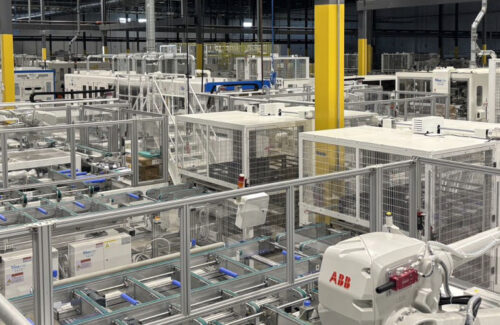
Norwegian battery developer FREYR Battery has entered the field of solar panel manufacturing after announcing its acquisition of Trina Solar's US manufacturing business. FREYR has previously sought to serve the energy storage and electric vehicle markets and is currently seeking to establish a gigawatt battery plant in Cowetta County, Georgia. Now, the company will control Trina Solar's 5-gigawatt solar panel assembly plant in Wilmer, Texas, and pay $340 million to Trina Solar for its US manufacturing assets. FREYR detailed in an investor presentation that it is establishing an operational and intellectual property agreement between Trina Solar and FREYR. The transaction is expected to be completed by the end of 2024, and FREYR will begin to focus on domestic battery manufacturing. FREYR is currently selecting a site and aims to commence construction in the second quarter of 2025. This battery device should be able to provide 1800 job opportunities and begin production in 2026. We are pleased to announce this transformative transaction, which will immediately make the company one of the leading solar manufacturing companies in the United States, "said Daniel Barcelo, newly appointed CEO of FREYR. We are honored to collaborate with Trina Solar, a global leader in manufacturing and solar technology. Domestic solar and battery manufacturing capabilities are crucial for energy transition and job creation. The United States was once a global leader in the solar energy field and can become one again FREYR stated that it has obtained US polycrystalline silicon supply through Hemlock for its final battery production, which establishes a platform for FREYR's US solar and battery storage strategy. The company also announced that it has terminated its battery technology license with 24M Technologies, but has not released further information about its potential Georgia battery factory. After the completion of the Tianhe Solar transaction, employees who joined FREYR include Tianhe Solar employee Lin Mingxing as Chief Strategy Officer and Dave Gustafson as Chief Operating Officer.
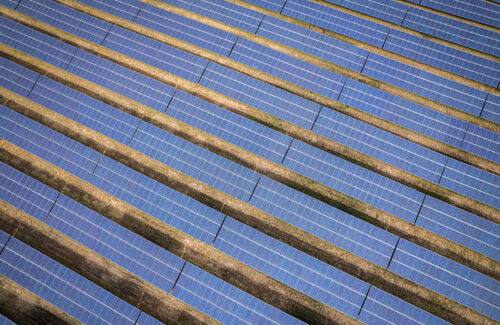
Large centralized power plants (such as 500 MW combined cycle natural gas power plants) are large enough to withstand human intervention. In order to manage these large power plants, asset owners hired a trading platform that continuously relies on manual intervention to participate in the market. On the other hand, distributed energy sources (DER) like solar energy cannot withstand this type of human intervention, not only because they are economically unfeasible, but also because their complexity is exponentially increasing and requires real-time multi-faceted input decisions. Automation is becoming increasingly important for optimizing the use of distributed energy and extracting its full value stream. That's why in order to fully develop the energy transition, distributed energy (DER) such as battery storage, cogeneration, heat pumps, and electric vehicle chargers need to be treated like small power plants. Traditionally, distributed energy has been seen as event based solutions rather than power plants. They are considered as grid edges rather than grid formation techniques. In other words, they are managed by a Reduced Service Provider (CSP), which tells the website, "Hey, we have an event tomorrow afternoon from 4pm to 6pm, please make sure to schedule batteries or backup generators Distributed energy is not continuously managed as part of the power grid, but is scheduled for up to 100 hours per year. Every year, there are over 8600 hours of unnecessary idle assets. In order to truly achieve energy transformation, distributed energy needs to be continuously managed. They need to constantly ask, 'Can I make money now? Can I save money now? Is it the cheapest time to charge now? How can I achieve the best carbon reduction?' Even if the answer is no dispatch, it is important to always seek opportunities.
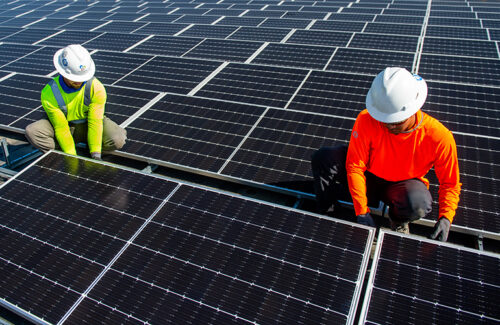
The Maryland Energy Administration announced today the launch of a new fiscal year 2025 (FY25) commercial solar subsidy program, which provides significant incentives for Maryland businesses and organizations to help pay for the cost of solar systems, benefiting low - and middle-income communities in Maryland who are burdened and underserved. The Maryland Energy Administration Director Paul G. Pinsky said, "The agency has developed a commercial solar subsidy program aimed at promoting fair access to commercial scale solar systems through more meaningful and targeted incentives. The commercial solar subsidy program promotes partnerships with companies and groups led by minorities, veterans, and people with disabilities to ensure strong and lasting community benefits The budget for the commercial solar energy plan for the fiscal year 2025 is $5 million. More rewards can be provided for non-profit organizations to install solar photovoltaic systems; Small businesses; Ethnic minority industrial and commercial enterprises; Disadvantaged enterprises; Weak enterprises in airport franchising; Enterprises owned by veterans and disabled veterans. Grants are also applicable to businesses and other organizations with significant energy needs that can benefit from large-scale solar installations, thereby reducing energy costs and improving operational sustainability. The 2025 Fiscal Year Commercial Solar Energy Subsidy Program is a first come, first served program that will roll in applications before 3:00 PM Eastern Time on March 31, 2025, or until funds are exhausted.
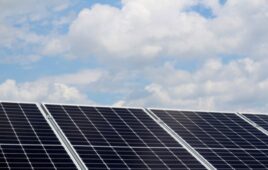
A coalition of 28 organizations, including non-profit organizations, solar and battery companies from the United States and Puerto Rico, submitted an Amicus statement to the federal court this week, opposing the Puerto Rico Financial Supervisory and Management Board (FOMB). The alliance believes that FOMB's legal attack on Bill 10, a law that extends Puerto Rico's net metering program until 2030, threatens the island's progress in solar energy and resilience. The 10th bill was signed into law in January of this year and was unanimously passed by the Puerto Rican House of Representatives and Senate, without opposition from the island's regulatory agencies. The law aims to ensure that Puerto Ricans continue to have access to affordable solar energy, and every additional kilowatt hour of solar energy shared by solar customers on the grid can earn points on their electricity bills. Thanks to net metering policies, 10% of Puerto Rico's homes are now equipped with solar energy with backup battery power, "said PJ Wilson, Executive Director of the Puerto Rico Solar Energy and Storage Association (SESA)." We are striving for the other 90% of people to also have the ability FOMB claims that Bill 10 prevents Puerto Rico's independent energy regulatory agency, the Puerto Rico Energy Agency, from preparing the necessary research to assess the impact of current net metering and energy allocation plans at least until 2031, thereby weakening the agency's ability to regulate the energy agency. Puerto Rico's energy sector. The Non Partisan Opinion Coalition supports the defensive stance taken by the defendant, Governor Pierluis, and Puerto Rico Senate Speaker in court, with the latter demanding the dismissal of the lawsuit on the grounds that FOMB has no authority to interfere with the implementation of Act 10, which essentially postpones the potential sunset date of a long-standing law from one year to another. In fact, the law has received widespread support, including a letter sent by 21 US Congress members in May 2024 urging FOMB to The briefing explains that FOMB's opposition to solar energy disregards the unanimous vote of all five political parties (covering the entire political sphere) in the Puerto Rican legislature on Bill 10. abandon harmful attacks on solar energy. The National and Puerto Rican Alliance of Non Profit Organizations also called on the White House to provide assistance. Net metering is not just a policy; Javier R ú a Jovet, Director of Public Policy at SESA, said, "For Puerto Ricans facing frequent power outages and high energy costs, this is a path to hope." "This alliance is standing up to defend net metering because Puerto Rico deserves a reliable, clean energy future, and FO MB's actions are attempting to undermine that future

The US International Trade Commission has lifted the recent trade tariffs imposed on aluminum extrusion imports. The US Department of Commerce conducted a one-year investigation and found that 14 countries were involved in dumping and/or receiving foreign government aid to produce cheaper aluminum extrusion products. The majority of ITC votes believe that the US market has not been harmed by the investigated countries. The Ministry of Commerce found that the quantity of aluminum profiles imported from all 14 countries (China, Colombia, Ecuador, India, Indonesia, Italy, Malaysia, Mexico, South Korea, Taiwan, Thailand, Türkiye and the United Arab Emirates) was harmful to the U.S. market; Four of these countries are expected to impose additional countervailing duties. The dumping margin ranges from 1.44% to 168.8%. The negative determination of damages by the US International Trade Commission means that the Department of Commerce cannot initiate any tariffs. The investigation was initially initiated by the Aluminum Extruder Alliance and the United Steelworkers (USW) on October 4, 2023. The Ministry of Commerce announced the investigation results on September 27, 2024. The American Aluminum Extruder Alliance and the American Workers' Union are surprised and disappointed by the committee's split veto and the surprising recusal of one of its members. The domestic industry has been and will continue to be harmed by unfair trade imports, and will evaluate all possible means it can take to address this damage, "the organization said in a press release. Imported solar brackets, solar tracker components, electric vehicle battery trays, and electric vehicle charging station parts or components are all extruded aluminum products that are potentially affected by tariffs imposed by the Ministry of Commerce. ITC usually consists of 6 members, but currently only 4 seats are full. Members David Johanson and Jason Kearns obtained a majority vote with only two votes, rejecting the import tariffs on aluminum extruded materials. ITC Chairperson Amy Karpel voted to uphold the original verdict, while Commissioner Rhonda Schmidtlein abstained from the vote. ITC is expected to release a report on its decision before December 10th. As of now, these tariffs will no longer affect aluminum profiles imported from these 14 countries, but petitioners can appeal the ITC's decision.
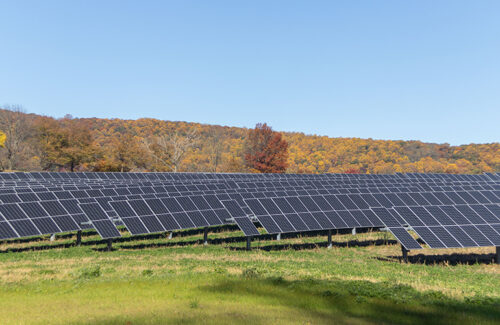
Standard Solar has completed a 3.1 MW DC solar project at Lehigh University Goodman Campus in Northampton, Pennsylvania. The company acquired the project from EDF Renewables, who developed the array and collaborated on its construction and completion. Standard Solar is the long-term owner and operator of the project. As someone who grew up in the region, I am delighted to support Lehigh in fulfilling its mission to become a sustainable model for higher education, "said Eric Partyka, Business Development Director at Standard Solar. This solar installation not only provides clean energy for the campus, but also plays a crucial role in advancing the university's ambitious carbon neutrality goals. This project demonstrates the power of collaboration to make real progress towards achieving a more sustainable future The system is expected to generate approximately 5108 megawatt hours of clean energy annually, meeting over 100% of the electricity demand of the Goodman campus and offsetting 8% of the total electricity consumption of the university's power grid. The Goodman campus has most of the university's sports and activity facilities for use by students, faculty, staff, and the community. As outlined in our climate action strategy, this solar installation is a crucial step on our path to achieving zero emissions, "said Joseph J. Helble, President of Lehigh University. By investing in on-site renewable energy, we not only reduce emissions, but also provide valuable learning opportunities for our students The single axis tracker array also provides practical research and learning opportunities for students at Lihai University. Through solar dashboards, students, teachers, and the public can track real-time energy production and analyze system performance. This project not only involves energy production, but also educating the next generation of leaders who will create solutions for a sustainable future, "said Audrey McSain, Director of Sustainability at Lehigh University. By integrating this project into our campus operations and curriculum, we are helping our students become creators of the future, addressing the climate challenges we face today and in the future Lehigh is the sole purchaser of energy produced through a long-term power purchase agreement with Standard Solar. The device also integrates a broader campus environment and protects the natural plant life in the area. In Standard Solar's 500 MW product portfolio, over 50 MW is dedicated to serving academic institutions, including K-12 schools and higher education institutions.
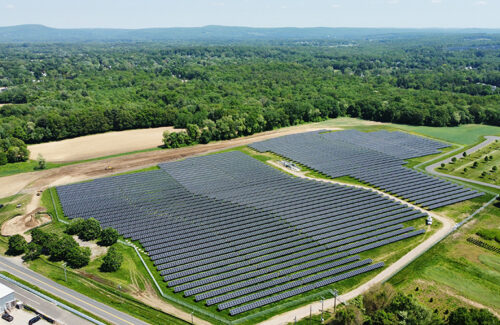
Verogy announced a partnership with NJR Clean Energy Ventures (CEV), a renewable energy subsidiary of New Jersey Resources, to develop solar projects and solar+battery energy storage systems in the Northeast region. Robert Pohlman, Vice President of NJR Clean Energy Ventures, said, "This partnership adds more options and geographic diversity to our already strong project pipeline." "Verogy is a respected developer committed to providing high-quality, impactful projects that reduce emissions and advance clean energy goals, just like us As leaders in the renewable energy market with extensive experience in designing, constructing, and operating large commercial solar assets, Verogy and CEV will focus on projects throughout the eastern coastal region. Verogy is delighted to collaborate with CEV, "said William Herschel, CEO of Verogy. Our collaboration with CEV provides our platform with the tools and resources needed to continue delivering high-quality projects on a large scale. From day one, our focus has been on transparency, security, and execution quality; CEV is well suited for this mission
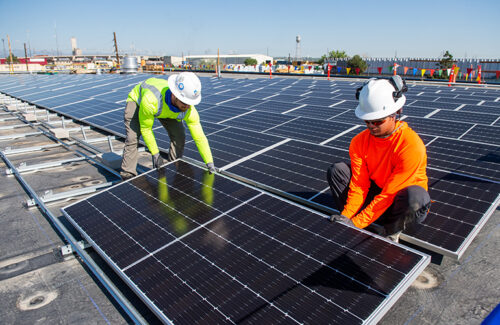
As the deployment of solar panels becomes increasingly common, commercial lending institutions will increasingly encounter buildings, fields, and parking lots covered by photovoltaic systems. When calculating mortgage loans for commercial real estate, lenders will be in one of the following three situations: the owner owns solar panels; Owners rent out their roofs, premises, or parking lots to third parties for the installation of solar panels; Alternatively, the owner can lease the solar panel array through a Power Purchase Agreement (PPA), but does not own the panels or system. Each situation has different impacts on lenders, and understanding this is crucial for guiding solar related financing. The owner also owns solar panels When the owner also owns solar panels, the lender should treat the solar panels as if they were any other assets or fixtures owned by the owner. The lender should submit a Uniform Commercial Code 1 (UCC-1) fixture on the solar cell array, which allows the lender to seize relevant property in the event of customer default on payment. But it should be pointed out that if the solar array is financed separately, the lenders may not be the first batch of lenders in this situation. In addition, the lender should submit UCC-9 (Framework for Transactions Involving Personal Property) and ensure that the loan documents include provisions to safeguard the interests of the owner in investment tax credits (ITC) related to solar panels. For lenders, refinancing existing solar panels may also be advantageous. This ensures priority in UCC-1 and UCC-9 applications and benefits the lender with a 30% ITC. Renting out the property to a third party If the property owner of a building rents out the roof, site, or parking lot to a third-party owner (TPO) of a solar array and only receives rental income, then this arrangement should be treated like any other lease. Lenders can capture it through standard allocation of leases and rent, ensuring regular payments. Amphetamine When building owners lease solar cell arrays from TPO, this arrangement typically involves the retention of PPA and UCC-1 fixtures for solar panels and ITC. PPA is a contract between the owners of solar energy systems, in which the construction of solar cell arrays does not require any upfront fees from the owners. TPO typically submits UCC-1 to protect its interests in solar properties in the event of borrower default. Many long-term solar leases are sold on installment payments, and owners acquire ownership of the array over time. Lenders can determine whether the lease is closer to sale by checking if the landlord can purchase the array at a symbolic cost at the end of the lease term and seeing who benefits from ITC. If the structure of the lease is similar to installment sales, the lender should carefully submit UCC-1 and UCC-9 to ensure their interests in the group and ITC, even if they may not occupy the primary position of financing.
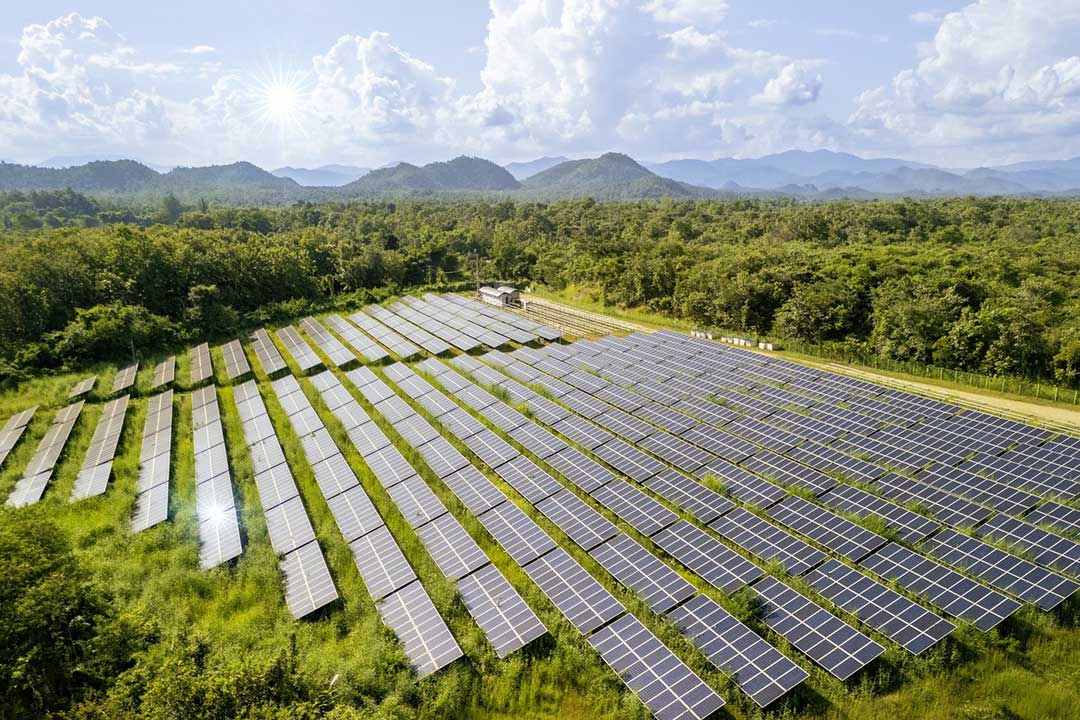
On Thursday, a 5-megawatt solar array was completed in Middlebury, Vermont, providing power to a nearby university. With the help of Encore Renewable Energy and Greenbacker Renewable Energy, 40% of Midbury College's electricity is provided by solar energy. This solar cell array is one of the largest solar cell arrays in the state, with 15348 solar panels installed on a single axis tracker. Lauri L. Patton, Dean of Middlebury College, said, "This is a true collaborative effort to fully electrify the solar array and provide renewable clean energy to the college." He pointed out that Middlebury College students have helped the project achieve results through collaboration. Support climate justice. Middlebury College will retain the renewable energy credits generated by the array, bringing it closer to achieving the climate goal of using 100% renewable electricity by 2028. Middlebury College, Encore, and utility Green Mountain Power (GMP) have arranged for the college to purchase renewable energy credits. The remaining 60% of Middlebury College's electricity comes from its biomass power plants, other local solar sites, and GMP grid, which is 100% carbon free and 68% renewable. Encore founder and co CEO Chad Farrell stated that this project is the first of its kind in Vermont, "bringing a customer-oriented, low-cost clean energy new model that will not have a negative economic impact on other taxpayers The solar cell array is located approximately two miles from the Middlebury campus, developed and built by Encore, and now owned and operated by Greenbacker, an independent power producer and investment management company focused on energy transition. This solar power plant is one of the first in Vermont to truly track the sun from east to west, allowing us to generate 15% to 20% more electricity, which provides lower electricity costs for Middlebury, "said Matt Murphy, the company's Chief Operating Officer. Green backed customer. As part of the project, South Street Storage - a battery system built next to a solar array - will store excess energy that could otherwise be lost during low electricity demand and peak sunlight at noon.
Categories
New Products
Tin Roof Rapid Solar Mounting System with Hanger Bolt Read More
Residential Small Solar Easy Bracket Kit for Home Balcony Read More
Automatic Single Pile Solar Tracker with 10 PV Panels Read More
Angle Adjustable Aluminum Easy Solar Panel Bracket for Garden Read More
Intelligent Single Post Dual Row Solar Tracking System Read More
5000ES Solar Off-Grid Energy Storage Inverter Supplier Read More
Multi Drive Double-Sided Single Axis Tracker System Read More
© Copyright: 2025 Xiamen Wintop New Energy Tech Co., Ltd.. All Rights Reserved.

IPv6 network supported
Friendly Links:
Integrated Solar System